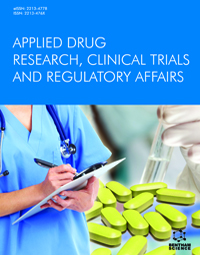Abstract
The clinical manifestations of Alzheimer's disease (AD) and associated
human tauopathies are driven by tau neuronal and glial abnormalities. Tau, a
microtubule-associated protein is inherently disordered due to its lack of a stable
structure and great flexibility. Intracellular inclusions of fibrillar tau with a sheet shape
accumulate in the brains of individuals with AD and other tauopathies. As a result, tau
separation from microtubules and tau transition from a disordered state to an
inappropriately aggregated state are critical steps before the start of tau-related
illnesses. Many studies have demonstrated that this shift is triggered by post translational changes such as hyperphosphorylation and acetylation. Before the
development of tau inclusions, the misfolded tau self-assembles and forms a tau
oligomer. Animal and clinical research utilising human samples has shown that tau
oligomer development contributes to neuronal death. During tauopathies, tau seeds are
released from cells and absorbed into neighbouring cells, resulting in the spread of
abnormal tau aggregation. Thus, Tau has become both a physiological and pathological
target for AD treatments during the last decade. Evidence reveals many potential
techniques for preventing tau-mediated toxicity: (1) direct suppression of pathological
tau aggregation; (2) inhibition of tau post-translational changes that occur before
pathological tau aggregation; (3) inhibition of tau propagation; and (4) microtubule
stabilisation. Aside from traditional low-molecular-weight compounds, newer drug
discovery approaches, such as the development of medium-molecular-weight drugs
(peptide- or oligonucleotide-based drugs) and high-molecular-weight drugs (antibody based drugs), provide alternative pathways to preventing the formation of abnormal
tau. Suppression of protein kinases or protein-3-O-(N-acetyl-beta-D-glucosaminl)-L-serine/threonine hydrolase, inhibition of tau aggregation, active and passive
immunotherapies, and tau silencing using antisense oligonucleotides; in several animal
models, have shown the capacity to prevent or minimise tau lesions and treat either
cognitive or motor impairment. Immunotherapy, which has already reached the clinical
stage of drug development, is the most advanced technique for treating human
tauopathies. Tau vaccines or humanised antibodies are designed to target a range of tauspecies in both intracellular and extracellular environments. Some of them recognise
the amino- or carboxy-terminus, while others have proline-rich areas or microtubule binding domains that they can attach to. In this review, we examine various clinical
targets for the treatment of tauopathies as well as the various molecules researched as
tau inhibitors that can be used in AD. Furthermore, we explore the efficacy of some of
the prominent molecules in clinical studies for tau-targeted therapies research.






















